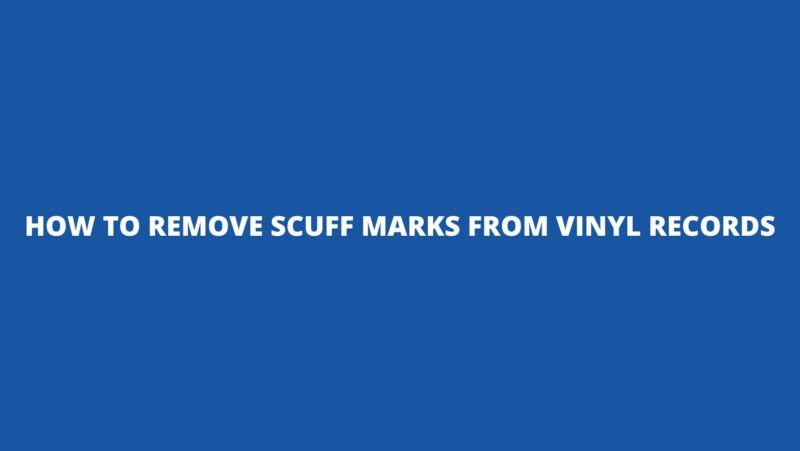Vinyl records are more than just a medium for enjoying music—they are cherished artifacts that capture the essence of time and artistry. Over the years, scuff marks may appear on these precious grooves, affecting both the visual appeal and sound quality of the records. Addressing the challenge of removing scuff marks while preserving the integrity of the vinyl requires a delicate balance between effective techniques and careful handling. In this article, we will explore the causes of scuff marks, delve into the steps for safely removing them, provide expert insights, and offer practical guidelines to ensure your vinyl records continue to shine with their original elegance.
Understanding Scuff Marks on Vinyl Records
- Causes of Scuff Marks: Scuff marks are typically caused by contact with rough surfaces, improper handling, or friction during storage and handling. They appear as superficial abrasions on the vinyl’s surface.
- Impact on Sound Quality: While minor scuff marks may not have a noticeable impact on sound quality, extensive scuffs can lead to audible surface noise, affecting the overall listening experience.
- Visual Appeal: Scuff marks detract from the visual aesthetics of vinyl records, potentially diminishing the collectible value of rare or limited-edition releases.
Steps to Safely Remove Scuff Marks
- Gather Supplies: Prepare a clean and dust-free workspace. You will need distilled water, a microfiber cloth or soft lint-free cloth, and a vinyl-specific cleaning solution.
- Inspect the Record: Before attempting any cleaning, inspect the record under proper lighting to assess the extent of the scuff marks and any potential damage.
- Test in an Inconspicuous Area: Before treating the entire record, perform a small test on an inconspicuous area to ensure that the cleaning solution does not cause any adverse reactions.
- Using Distilled Water: Dampen the microfiber cloth with distilled water and gently wipe the scuffed area in a circular motion. Do not apply excessive pressure.
- Utilizing Vinyl Cleaning Solution: If the scuff marks are stubborn, apply a vinyl-specific cleaning solution to the cloth and repeat the gentle circular motion.
- Rinse and Dry: If using a cleaning solution, rinse the record with distilled water to remove any residue. Gently dry the record with a clean, dry microfiber cloth.
Expert Insights: Delicate Restoration Techniques
- Vinyl Restoration Experts: Restoration experts emphasize the importance of using gentle techniques and appropriate cleaning solutions. They recommend avoiding abrasive materials or excessive pressure.
- Vinyl Collectors: Experienced collectors stress the significance of preventive measures, such as proper handling and storage, to minimize the occurrence of scuff marks in the first place.
Preventing Future Scuff Marks
- Proper Handling: Handle vinyl records by their edges to avoid contact with the playing surface. Use inner and outer sleeves to protect records during storage.
- Clean Hands: Always ensure that your hands are clean and free from oils before handling vinyl records.
- Storage: Store records vertically to prevent friction between records, and avoid stacking records on top of each other.
Conclusion
The process of safely removing scuff marks from vinyl records is a careful endeavor that requires attention to detail and respect for the delicate nature of vinyl. By following proper techniques, utilizing suitable cleaning solutions, and exercising caution, you can restore the visual elegance and, to some extent, the sound quality of scuffed records. However, it’s crucial to recognize that some scuff marks may be irreversible, emphasizing the significance of preventive measures and meticulous handling to ensure the continued enjoyment of your vinyl collection.
As you embark on the journey of vinyl restoration, remember that every mark and scratch tells a story—an imprint of the music’s journey through time. By approaching the restoration process with care and reverence, you contribute to the legacy of vinyl records, ensuring that their beauty and sound endure for years to come.


